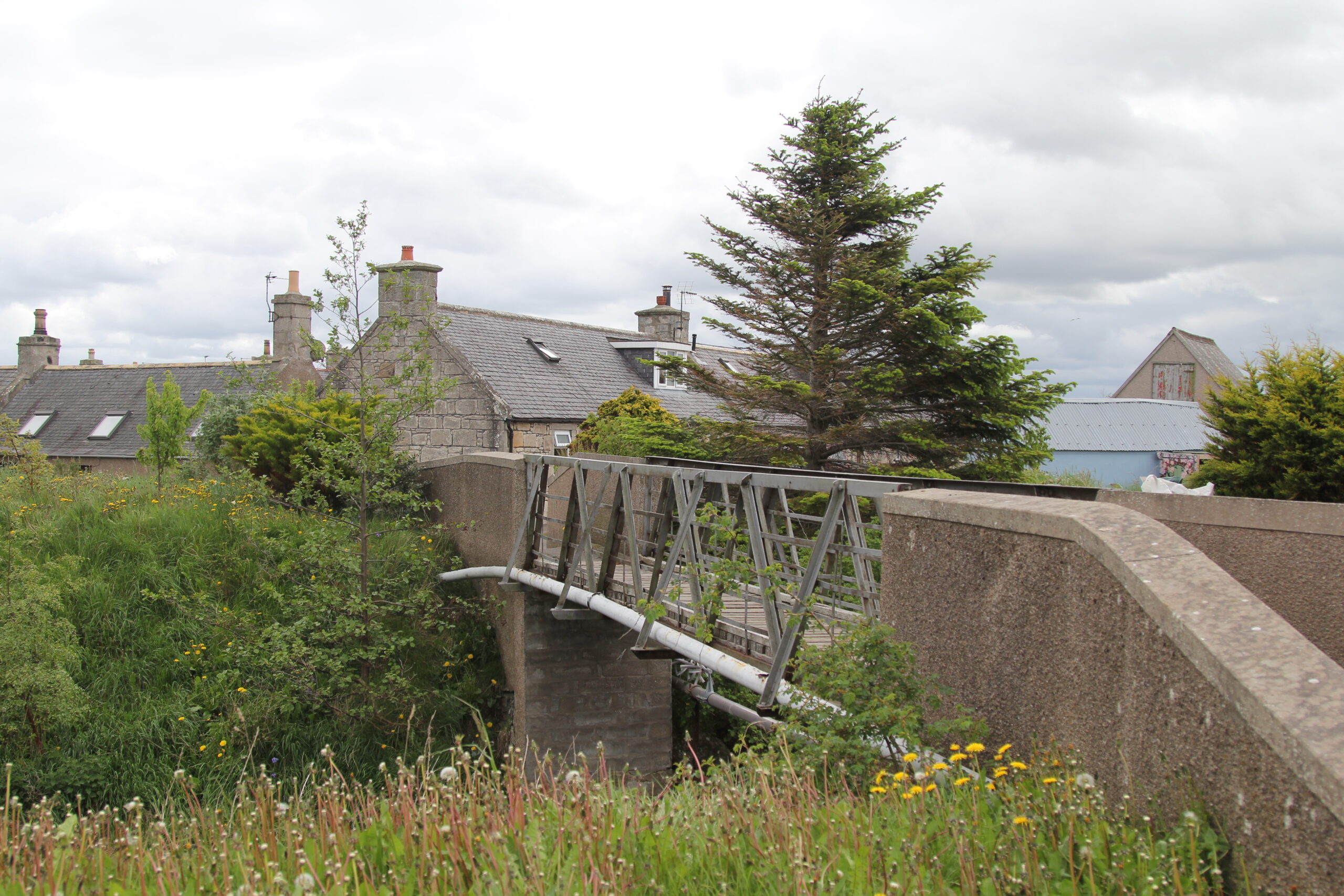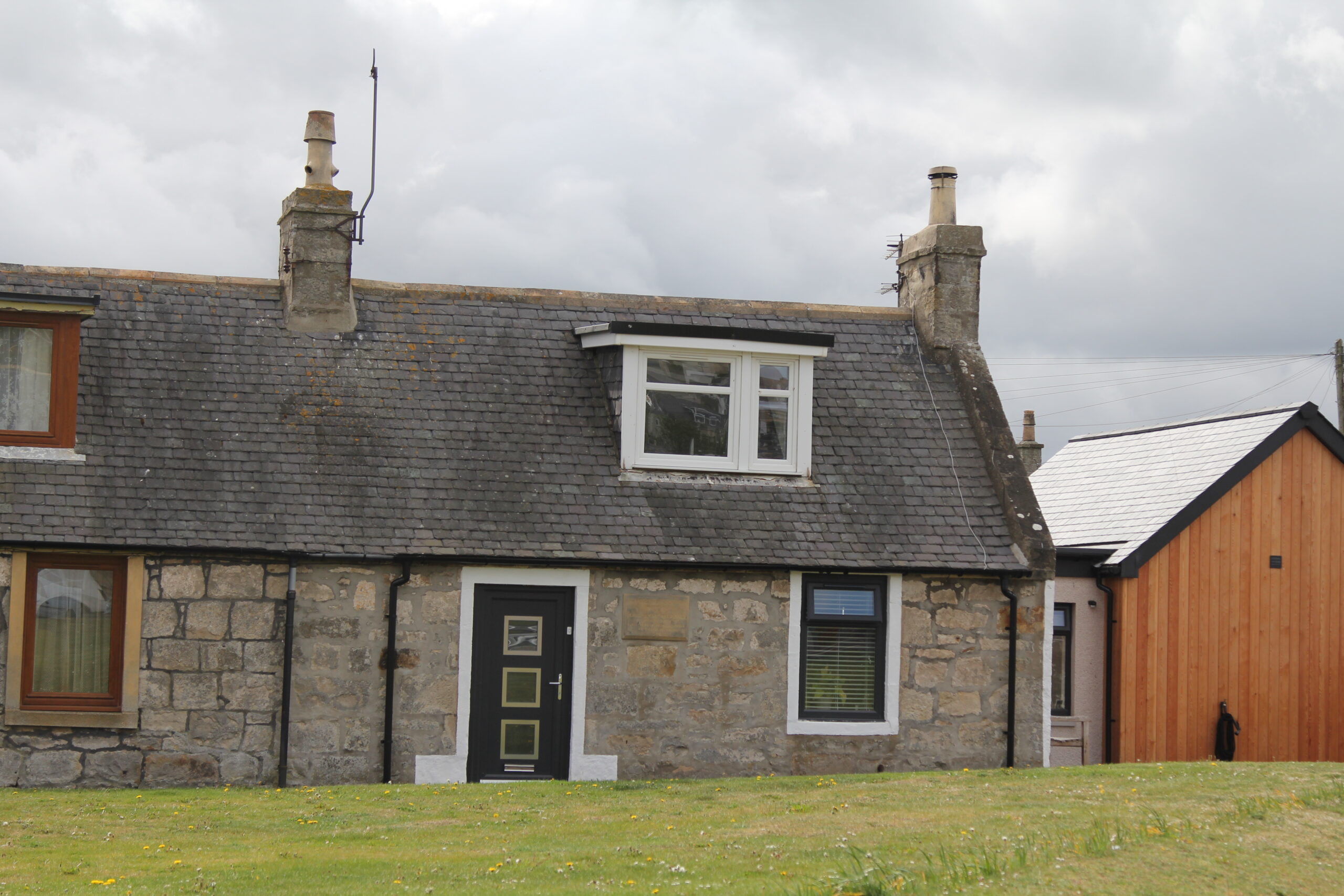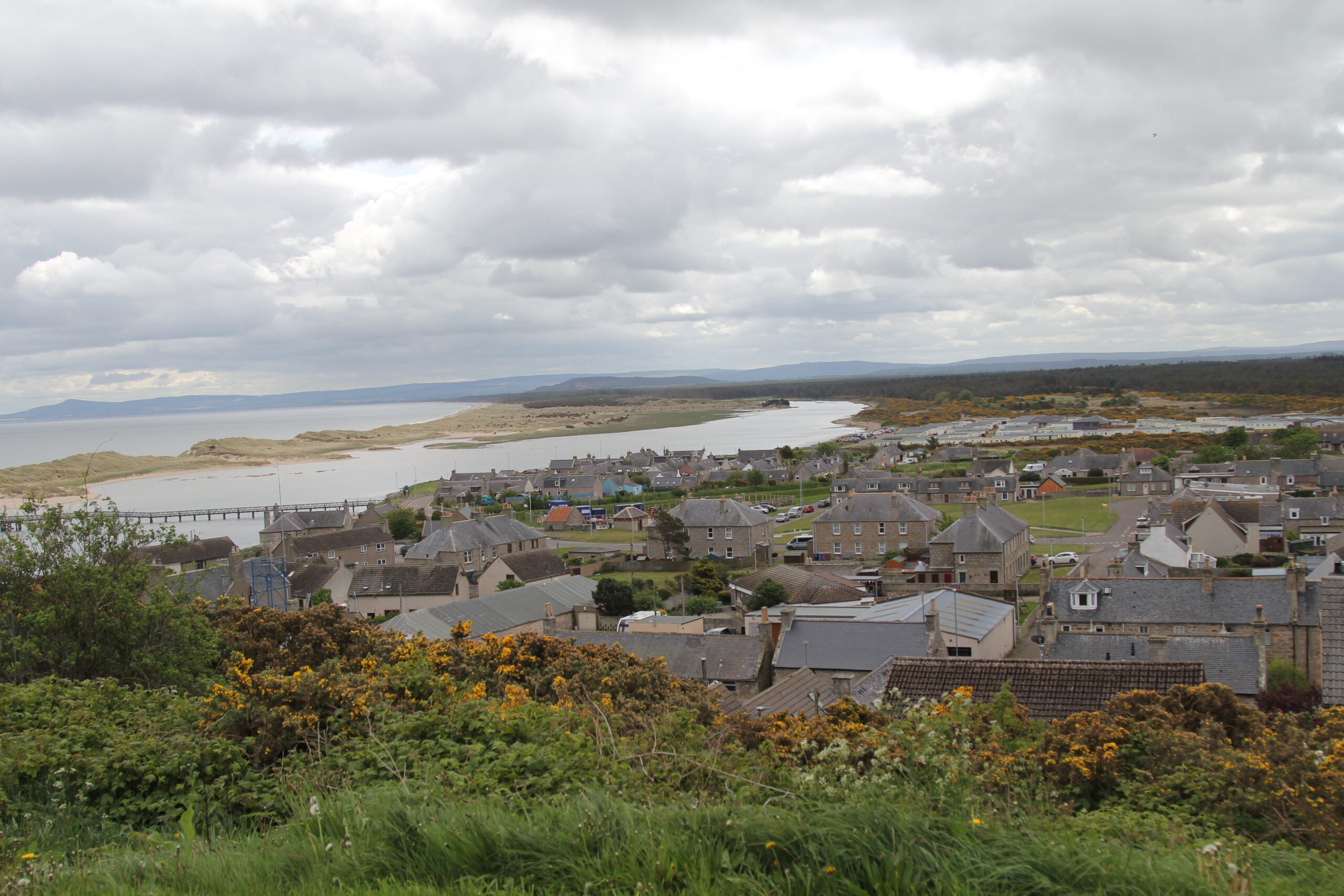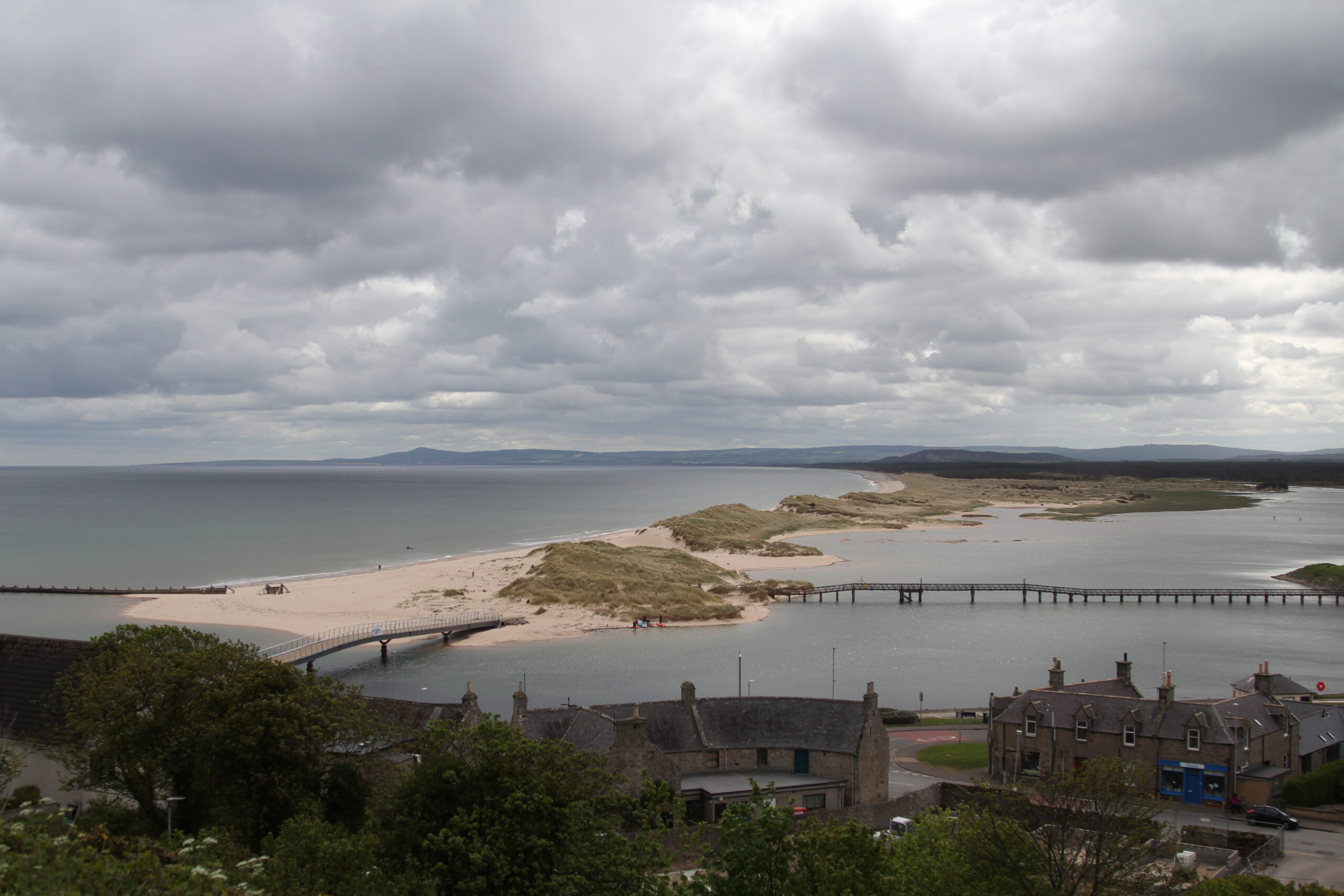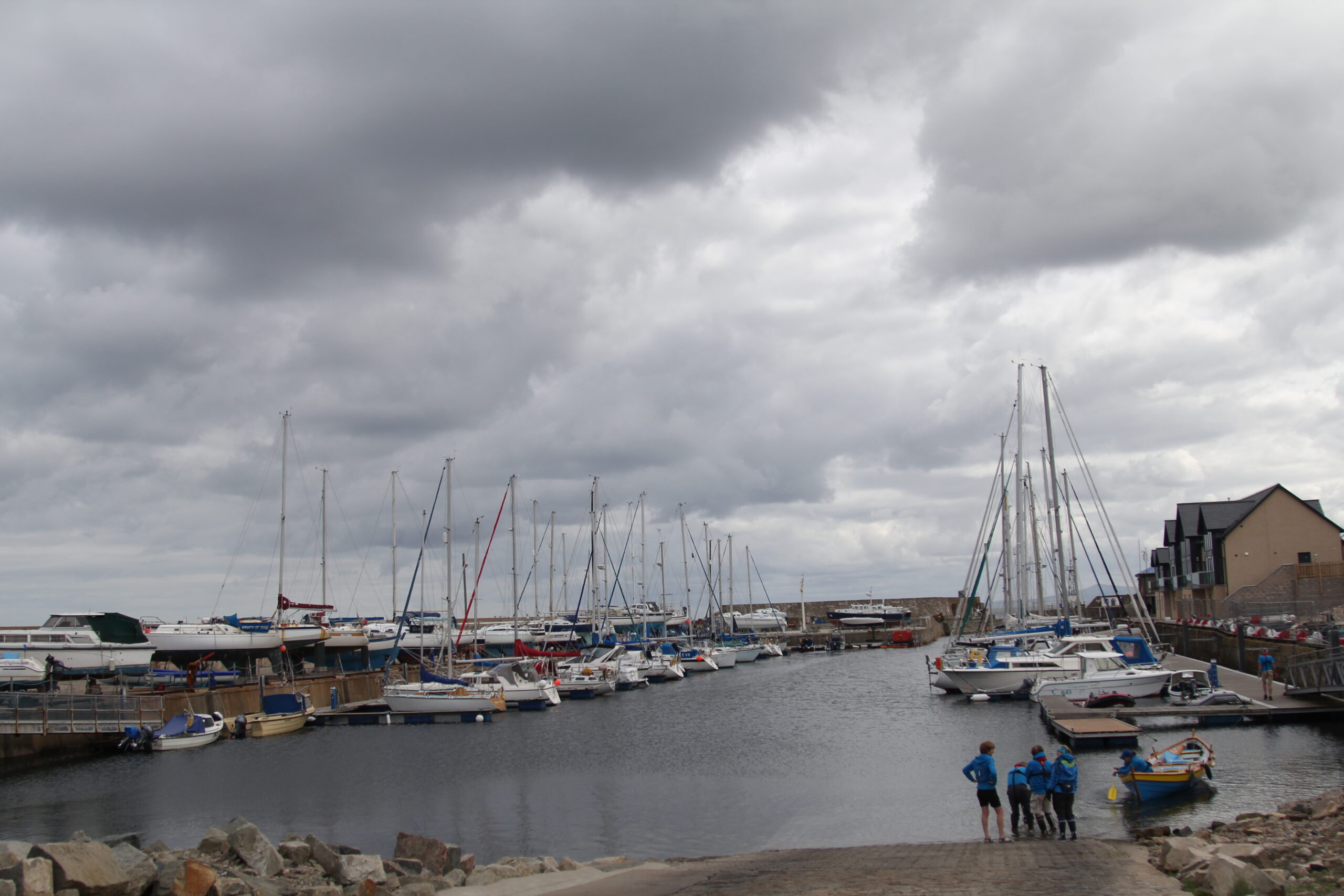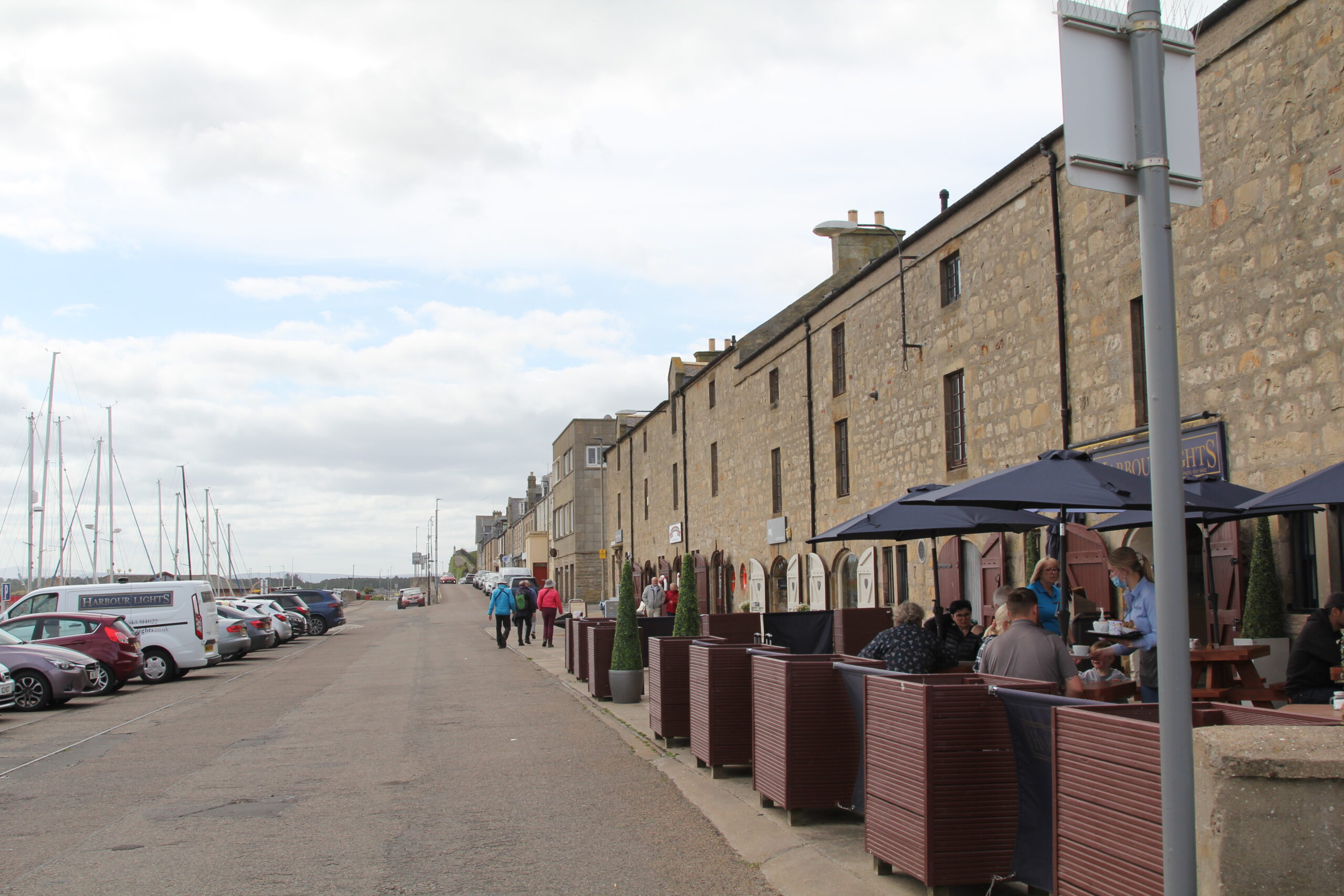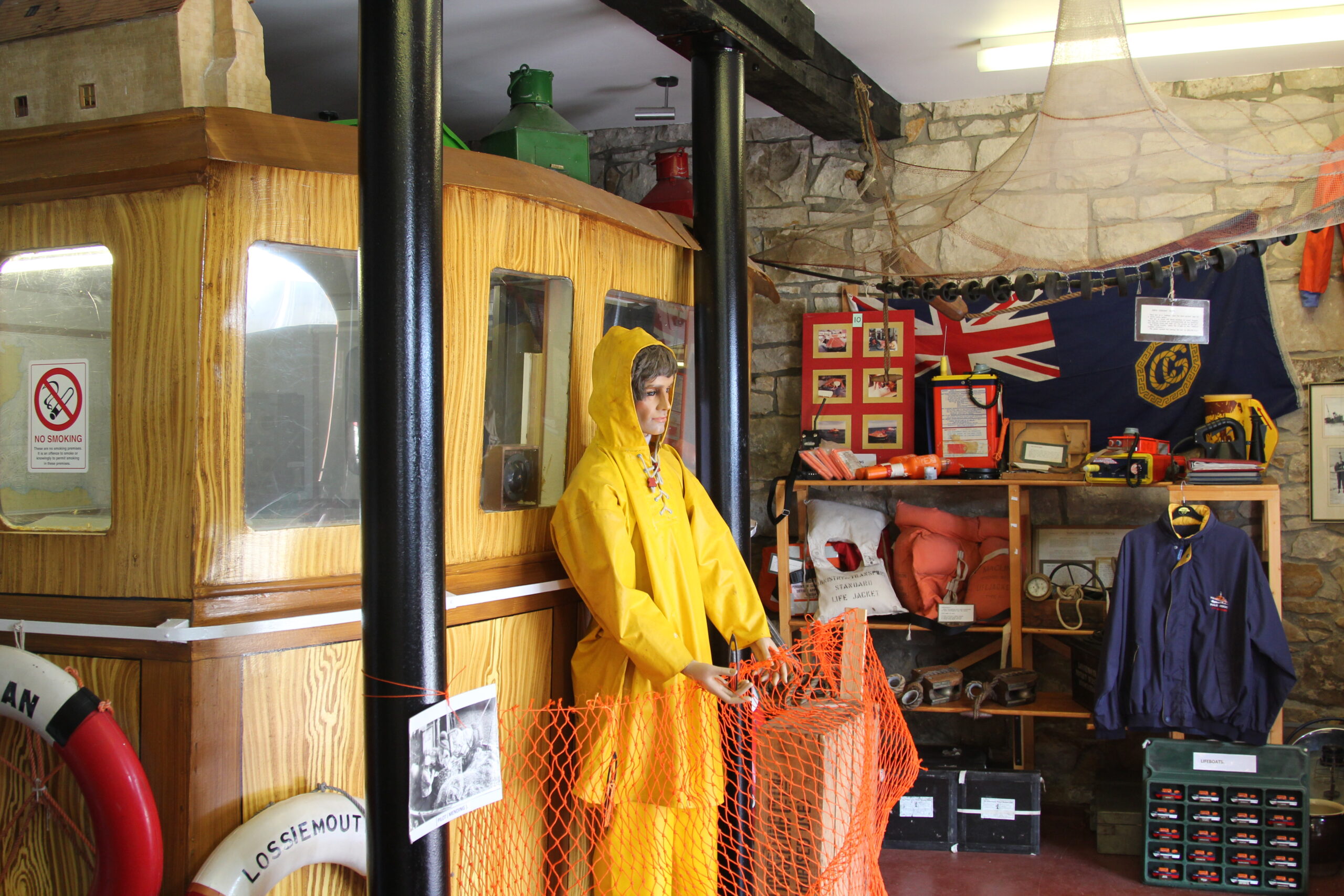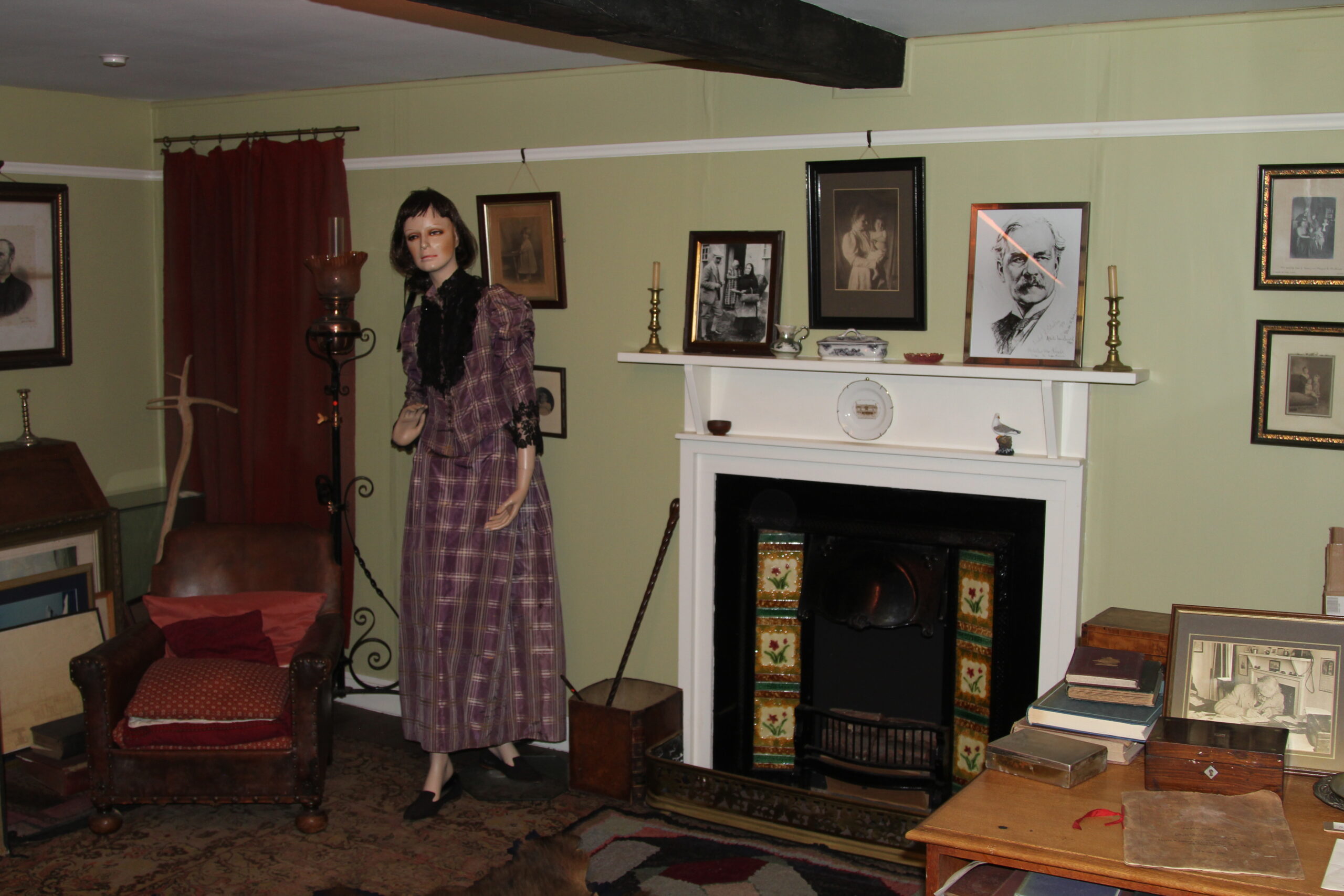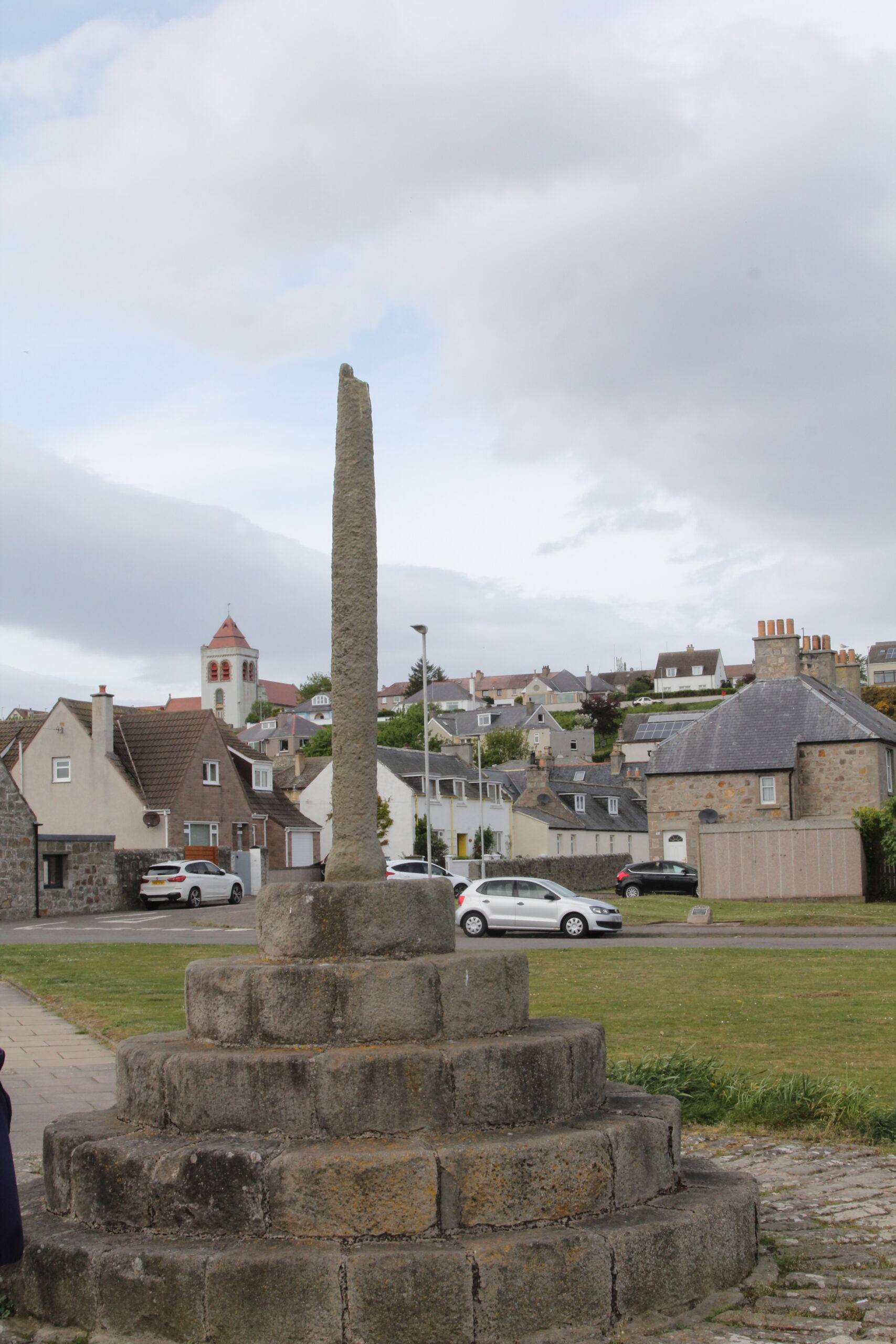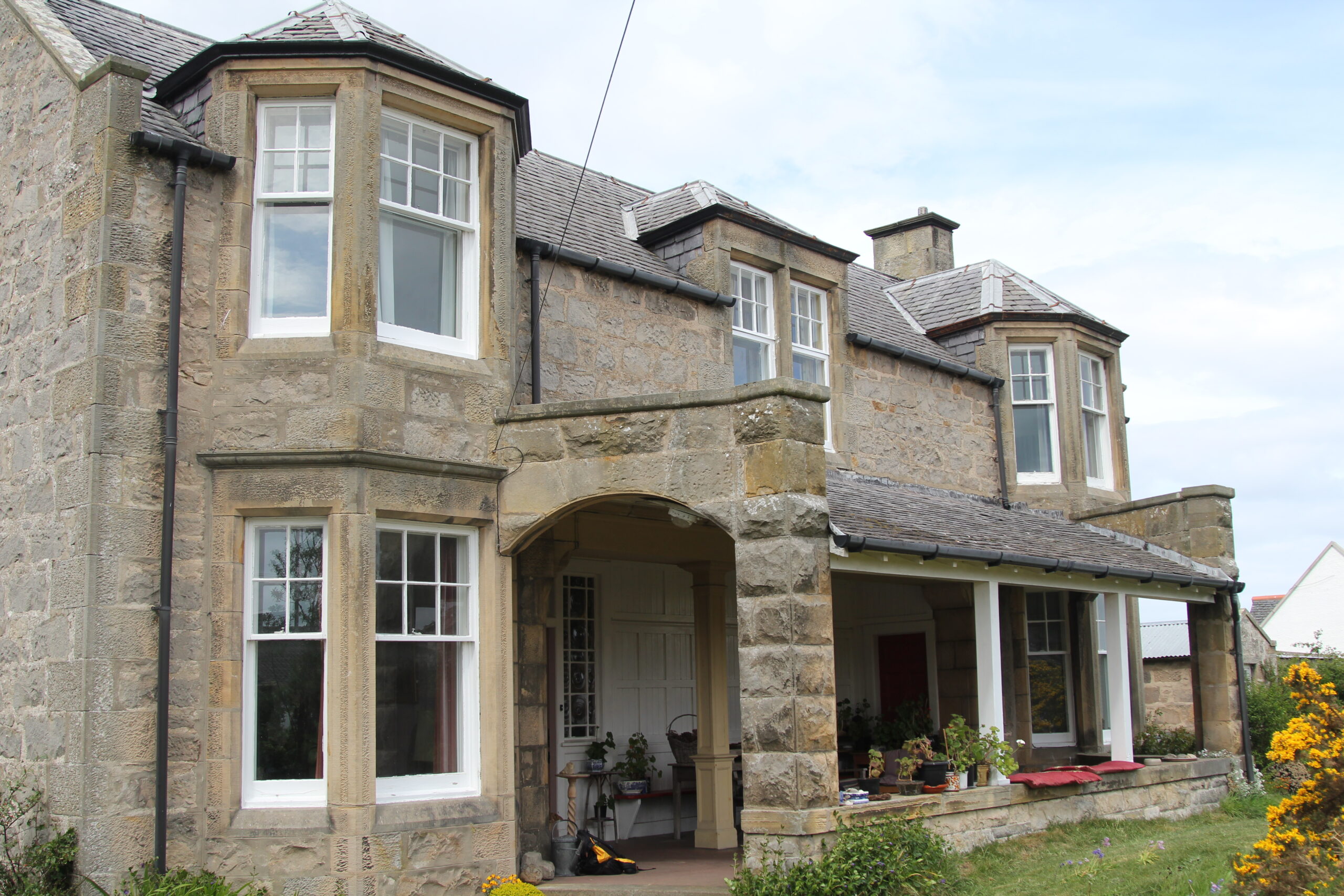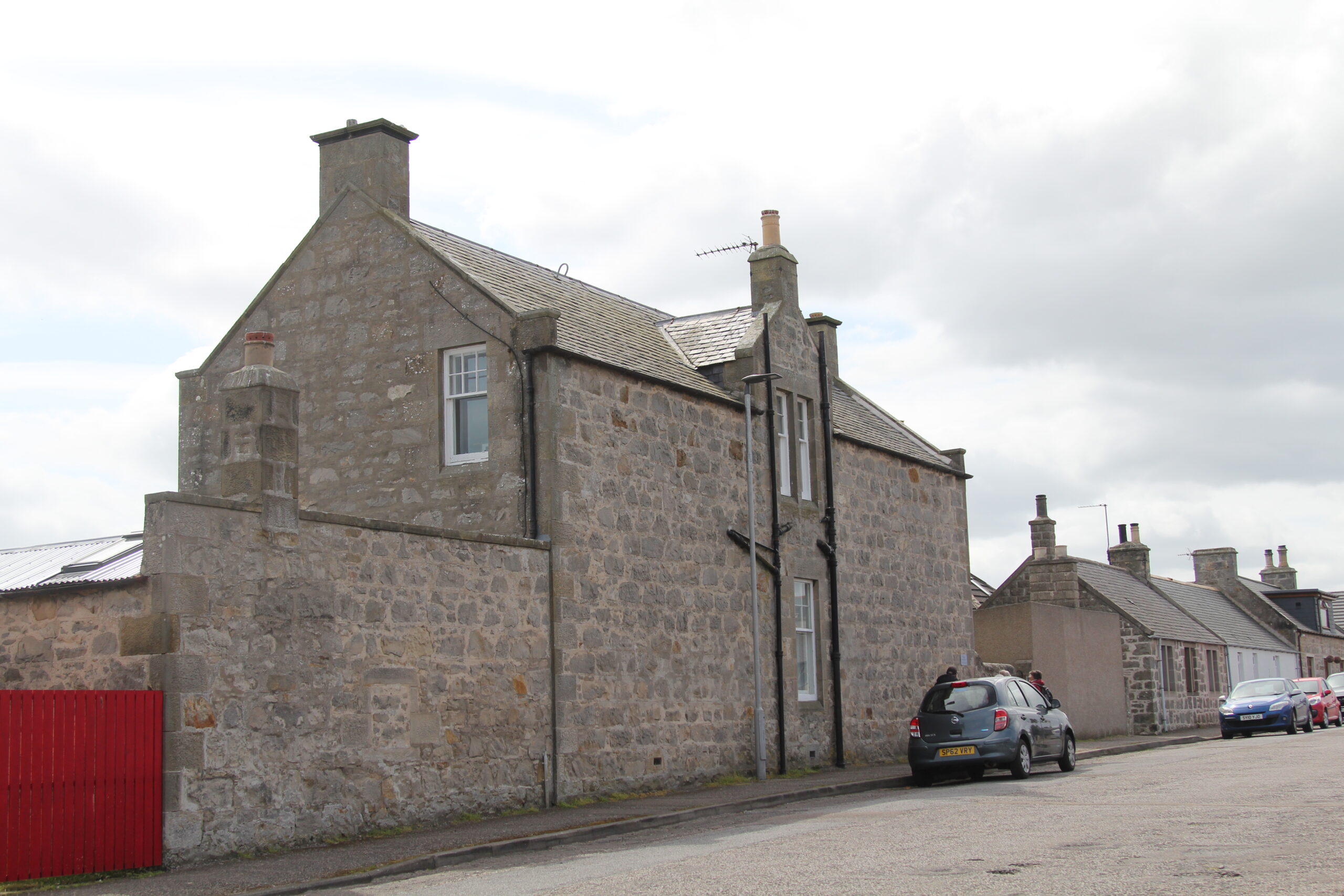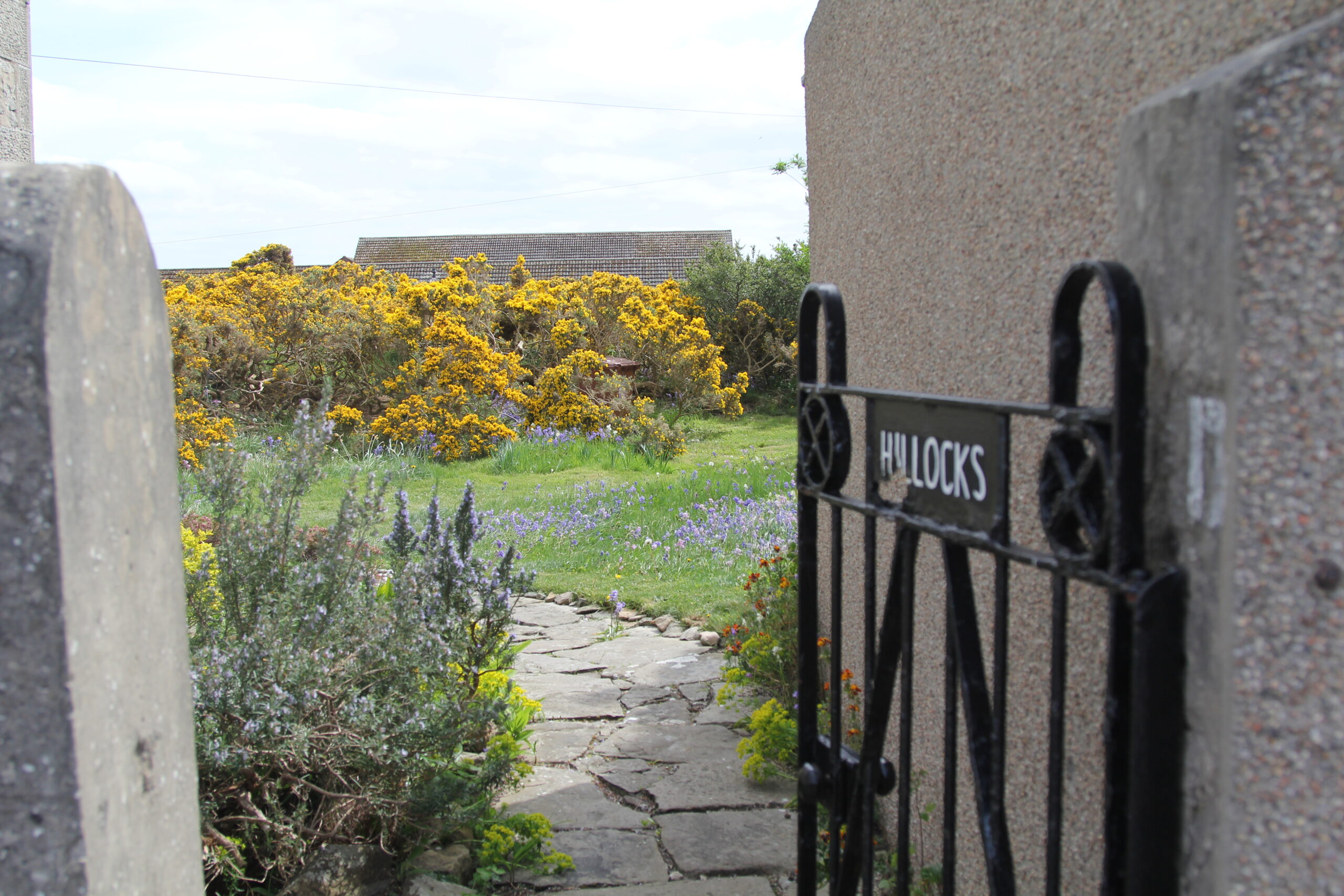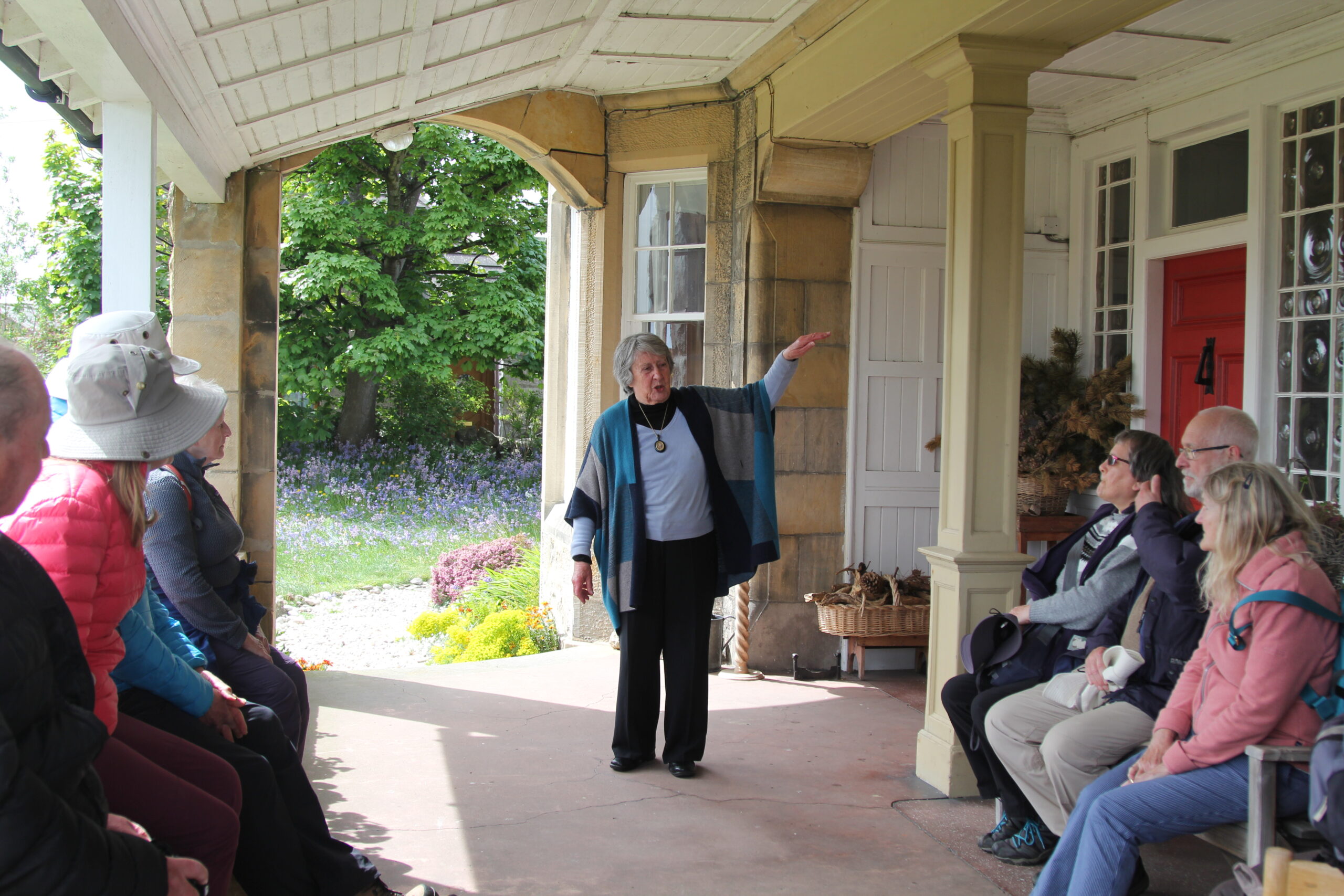Lossiemouth Heritage Walk
Saturday 14th May 2022, 10:30am
A blustery but sunny day greeted more than two dozen members who gathered at Seatown, the easternmost area of present-day Lossiemouth, ready to learn more of this attractive town and its famous son Ramsay MacDonald, Britain’s first Labour Prime Minister. Ably guided by David McKenzie we threaded our way past Seatown’s cottages, which date from the 1830s, and crossed the Spynie Canal by footbridge. Spynie Canal pre-dates the cottages and involved the Scottish civil engineer Thomas Telford, whose famed works can be seen UK-wide. We paused awhile by the Mercat Cross, an historic boundary marker between Seatown and Lossiemouth, which stands close to the end-terrace cottage where Ramsay MacDonald was born in 1866. Moving on, we passed by the house of his grandmother where he moved to with his mother.
Up the steps to Prospect Terrace, with its fine viewpoint over East Beach, the Spey estuary and beyond, where we drew breath whilst reading the informative board placed there. The old footbridge at the beach below, dating from 1918 but now closed due to safety concerns, could easily be viewed together with its modern replacement which is nearing completion.
David led us on into the grid-patterned streets of the town which lead down to the old harbour (now a yachting marina), with a stop at the large open space of James Square. Here an old horse-drawn plough is displayed which was instrumental in a twentieth century ownership dispute which saw this artefact used to plough up the land of the square.
The two basins of the present-day yachting marina were a very busy place in Victorian times, being then the centre for the town’s large herring fishing fleet. Our footsteps neatly led us to the volunteer-run Lossiemouth Museum, housed in a handsome quayside building, once a store for fishing gear. With our visit pre-booked the group was admitted in batches and met again with Iona Kielhorn, who had spoken to members about her grandfather Ramsay MacDonald at our indoor meeting on 9th March. Iona expertly guided us around the many exhibits of the two-storey museum and in particular the faithfully recreated study of Ramsay MacDonald featuring items from the MacDonald home. The Museum displayed a wealth of items relating to the bygone life and heritage of Lossiemouth. The shop area, the bench outside and the nearby ice cream shop all encouraged lingering, but by now it was lunchtime, with a busy afternoon ahead. So a leisurely re-visit to the Museum at a later date is called for, to fully explore the exhibits and to understand their place in Lossiemouth’s history.
After going our separate ways for lunch we regrouped and made our way, via a short pedestrianised section of the dismantled railway line to Lossiemouth, to the house in Moray Street which Ramsay MacDonald built for his family. Today it is the home of Ramsay’s granddaughter, Iona Keilhorn, and she very kindly offered to guide our group, in batches, around the family home.
From the comfort of the verandah overlooking the garden Iona gave a short introductory talk before escorting us inside the house itself to view rooms where much of the family furniture had once stood within 10, Downing Street. Iona pointed out significant items from Ramsay’s premiership as well as the more humble and homely everyday objects which her grandfather had used at that time. We were encouraged to handle and touch books and furnishings and felt priviledged to be allowed to do so. Many items had an interesting background story. Throughout Iona gave us a great deal of her time, was unhurried, and happy to answer a variety of questions, making this a memorable visit.
Our day in Lossiemouth was completed by travelling to Spynie Kirkyard to visit the MacDonald family grave.
